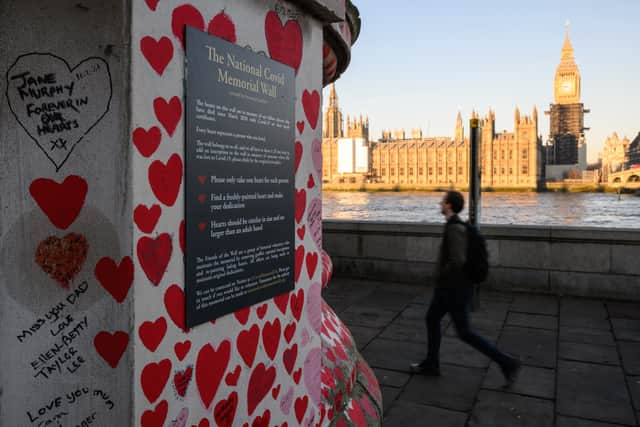Covid-19 pandemic deaths ‘had greatest impact in London’, figures reveal - how does your borough compare
and live on Freeview channel 276
London has seen a higher rate of excess deaths during the pandemic than in any other region in England, figures have revealed.
The coronavirus pandemic has had “the greatest impact in London concerning mortality” than in any other area of the country, City Hall data has shown.
Advertisement
Hide AdAdvertisement
Hide AdFrom March 2020 to January 2022, there were 16,711 excess deaths in the capital - or the difference between the number that were expected, and how many actually happened.
The capital has the second biggest total excess Covid deaths of any region - with the lowest being the North East with 6,422, and the highest being the North West with 19,212.
Loading....
As well as the highest rate in the country, London had the biggest proportion of coronavirus deaths, with one in five of all fatalities being caused by Covid-19.
A total of 107,162 Londoners died between March 2020 and January 2022 - 21,866, or 20%, of which were Covid-19 deaths, compared to 9%, or 9,974 of 110,935, in the South West.
Advertisement
Hide AdAdvertisement
Hide AdThe report on population change in the capital stated: “In both the main ‘waves’ the highest mortality rates were observed in London.
“Deaths involving Covid-19 have accounted for the highest proportion of total deaths.


“Modelling indicates that deaths in London have been 18% higher than expected, while in the South West the proportional increase was only 7%.
While the five boroughs in London with the highest level of excess mortality were Newham, Redbridge, Haringey, Harrow and Hackney.
Advertisement
Hide AdAdvertisement
Hide AdAnd the five boroughs with the lowest excess mortality were Bromley, Kingston-upon-Thames, Kensington and Chelsea, Richmond-upon-Thames and Camden.
It comes as another study, published by medical journal PLoS Medicine, revealed Covid-19, diabetes and other diseases took 126,761 years away from Londoners’ lives in 2020.
Loading....
Deprived areas in England saw eleven times more excess deaths among young people during the Covid-19 pandemic than in affluent parts of the country, the medical study found.
Researchers found excess deaths during 2020 in people aged 15 to 44 were highest in London and the North West, and lowest in the South and South West.
Advertisement
Hide AdAdvertisement
Hide AdAnd excess years of life lost “were highest in London” which saw 126,761 deaths in the city from the first week of March 2020 to Christmas Day, that same year.
Study author Dr Evangelos Kontopantelis said: “The impact of the pandemic, when quantified using years of life lost, was higher than previously thought, on the most deprived areas of England and Wales, widening pre-existing health inequalities.”
Loading....
Significantly more years of life were lost in deprived communities than affluent ones in 2020.
Deprived communities witnessed 1,645 lost years of life per 100,000 people compared with affluent areas which lost 916 years of life per 100,000 people.
Advertisement
Hide AdAdvertisement
Hide AdScientists looked at mortality records and estimated the years of life people lost during 2020 by sex, region and deprivation quintile using data from January 2015 to December 2020.
Measuring years of life lost is a more informative way of assessing inequalities caused by the pandemic than looking at excess deaths alone, according to the researchers.
The researchers say the findings are an effective way of determining unmet needs.
They could be used to target vaccine drives at marginalised groups and target financial and social support at these groups as part of pandemic recovery plans, the academics added.
Advertisement
Hide AdAdvertisement
Hide AdDr Kontopantelis, of the University of Manchester, added: “Looking at years of life lost is an effective way of determining unmet needs and we suggest this could be used for prioritising vaccine delivery and providing targeted financial and social support as part of immediate and longer-term recovery plans.
“Public health measures and wider socioeconomic interventions are needed to support communities that have been disproportionately affected by the pandemic.”
Comment Guidelines
National World encourages reader discussion on our stories. User feedback, insights and back-and-forth exchanges add a rich layer of context to reporting. Please review our Community Guidelines before commenting.
